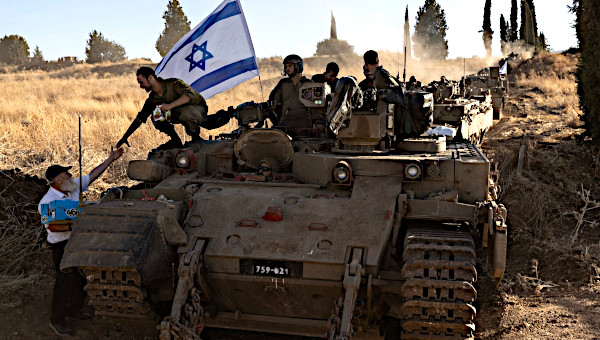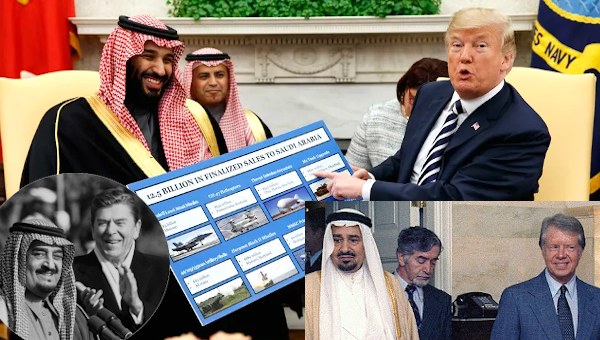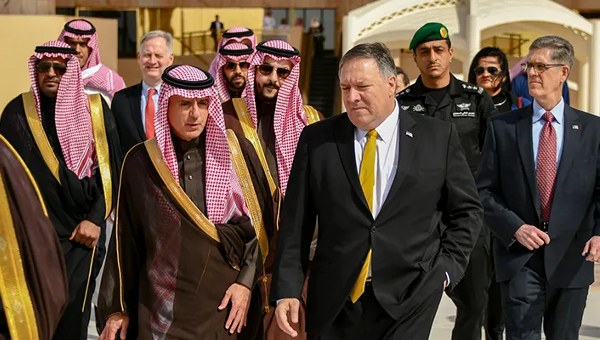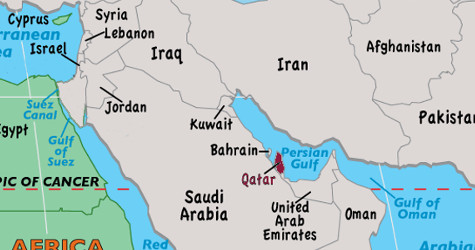Money, Markets, and Monarchies
Jadaliyya (J): What made you write this book?
Adam Hanieh (AH): I have long felt that the nature of the Gulf Cooperation Council (GCC) states is poorly understood in mainstream media commentary and in much of the political debate around the Middle East, often reduced simply to the Gulf’s oil and gas exports, ruling family intrigues, or the role of religion. In the aftermath of the Arab uprisings, it has become patently clear how important these states are to the Middle East’s future trajectories, but a lot of discussion around this focuses on the most overt manifestations of the Gulf’s power projection in the region – the Gulf’s role in various wars and conflicts, for example, or the support of Saudi Arabia and the United Arab Emirates to post-uprising regimes such as Sisi’s military government in Egypt.
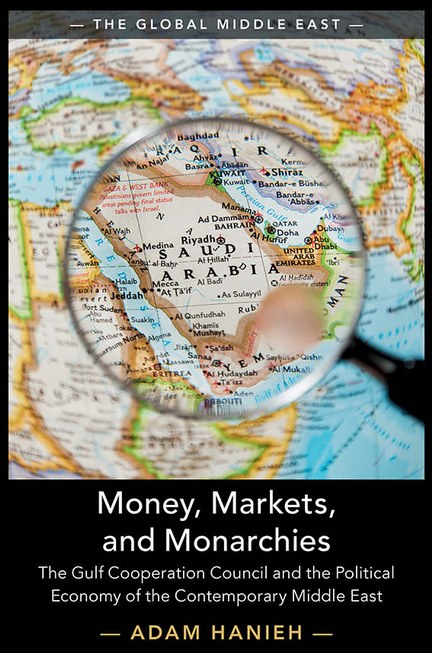 In writing this book, I hoped to demonstrate the importance of a political economy perspective to these debates, with a focus on the ways that the Gulf’s position as a critical site of capitalism in the Middle East is shifting patterns of accumulation throughout the wider region. I think the political implications that flow from this are (and will continue to be) immense. To this end, I sought to provide an empirically-grounded examination of particular sectors that are critical to the contemporary Middle East, while also exploring a key theoretical issue: how do we conceptualize the linkages between capital accumulation and processes of class and state formation across national, regional, and global scales?
In writing this book, I hoped to demonstrate the importance of a political economy perspective to these debates, with a focus on the ways that the Gulf’s position as a critical site of capitalism in the Middle East is shifting patterns of accumulation throughout the wider region. I think the political implications that flow from this are (and will continue to be) immense. To this end, I sought to provide an empirically-grounded examination of particular sectors that are critical to the contemporary Middle East, while also exploring a key theoretical issue: how do we conceptualize the linkages between capital accumulation and processes of class and state formation across national, regional, and global scales?
J: What particular topics, issues, and literatures does the book address?
AH: There has been a resurgence of very exciting and insightful writing on the contemporary Gulf in recent years, much of which goes beyond the focus on oil and “rentier states” that have long dominated academic discussion of the region. This book is intended as a contribution to this new body of literature in two distinct ways. First, I endeavour to explore the co-constitution of the Gulf’s political economy with that of the global. As part of this, I argue that the flows of Gulf financial surpluses are an essential component to understanding the concrete form of the contemporary world economy – a structure marked by persistent levels of over-accumulation, continued pre-dominance of United States and European capital, but the emergence of new centers of accumulation and political rivalries emanating from China, East Asia, and elsewhere. This uneven and hierarchical global structure, moreover, shapes the nature of capital accumulation and class formation in the Gulf itself.
Second, alongside a focus on this global-Gulf relation, I seek to integrate the Middle East as a whole into this analysis, arguing that the Gulf’s location within the global has been articulated through shifting patterns of accumulation in the wider region. I investigate this through a detailed mapping of major economic activities in the Middle East – including agriculture and agribusiness, real estate development, urban infrastructure such as power, water, transport and telecommunications, as well as banking and finance. These interweaving spatial relations between the global, Gulf, and regional political economies helps us understand the Gulf’s prominent position in the Middle East’s recent politics. They are also crucial to unpacking the implications and potential trajectories – which, at this moment, remain open-ended – of the severe crises currently cascading through the region.
In making these arguments, I draw upon a range of academic debates that extend beyond the Middle East, including recent literature on how to understand the origins of capitalism in the context of the world system, and the relationship of different spatial and temporal scales to this process. Drawing from the work of people such as Henri Lefebvre, Neil Brenner, Eric Swyngedouw, David Harvey, and other geographers, the concept of scale is particularly prominent in the book’s argument. I think one of the key contributions of these critical geographers is the insistence that there are no “natural” geographical units in capitalism; space is “produced” through the territorialization, regulation, and contestation of flows of capital and other social resources. While the national scale remains absolutely critical to these processes, we also see a proliferation of other spatial scales that are no less essential to contemporary capitalism.
Greater sensitivity to the ways in which capitalism necessarily operates throughout such scales helps us overcome a certain analytical narrowing of vision typically associated with binary models of spatial differentiation, e.g., centre/periphery, urban/rural, North/South, First/Third World etc. This does not mean a flattening of space or inattention to divergence and unevenness – rather, it points to how spatial polarization is intrinsically generated by, and cascades through, a multiplicity of variegated scales. In the context of the Gulf, the accumulation of capital is deeply enmeshed in such a reworking of space. There are many interesting observations that emerge from this perspective, such as the impact of GCC telecoms on the making of Arab urban spaces; the ways in which GCC banks intermediate financial processes in other Arab countries; or the weight of Gulf agribusiness firms in the circulation of various agro-food commodities across the Middle East. So, this book is an attempt to explore these and other issues associated with the regional influence of the Gulf’s political economy – to think about Gulf capitalism outside an analytical privileging of the “national” box.
J: How does this book connect to and/or depart from your previous work?
AH: My earlier book on the Gulf, Capitalism and Class in the Gulf Arab States, largely focused on processes of class and state formation inside the GCC itself. That book had one chapter that tentatively explored some aspects of the Gulf in the wider region, but it was in no way a comprehensive treatment of the topic. My second book, Lineages of Revolt, touched upon some of these issues in a bit more detail, but it was primarily concerned with describing neoliberalism in the Middle East and the nature of the uprisings then underway. So there are definitely continuities with my earlier work, but this latest book explores the relationship between Gulf capitalism and the wider region through a range of new sectors (and in much more depth) than I have written about previously. As mentioned, I also try to develop a theoretical framing through which to approach these questions, drawing upon the notion of “scale” as it has been developed in certain strands of critical geography and Marxian political economy.
In addition, I devote two chapters in this book to considering various aspects of “crisis” and the politics of the contemporary moment in the region. So I talk about the impact of lower global oil prices that began in mid-2014, and examine the various “Vision” documents promulgated by all Gulf leaders in recent years. I argue that we need to see these strategic responses beyond simply an issue of technocratic policymaking, and ask what are the social and class forces that are benefiting (or not) from these new policies. A final chapter discusses the numerous wars and unprecedented mass displacements currently occurring, as well as the internal conflicts between the Gulf states themselves – most notably the Saudi-led blockade of Qatar. In covering these ongoing issues, I hope to situate what might come after these conflicts – the so-called “reconstruction” phase that everyone seems to be talking about – within the overall argument of the book.
J: Who do you hope will read this book, and what sort of impact would you like it to have?
AH: Well, like all of us who work in academia, I hope the book gets used in university courses and becomes part of the academic debate around the Middle East! At the same time, I have tried to write this book in such a way that people who are non-specialists on the region can benefit from engaging with it. I think there is a lot that can be learned from the Middle East, and it is quite striking how many of the wider thematic debates essentially ignore the region – one example that I examine in the book is the question of financialization. There is a lot that has been written about forms of finance and the impact of financial markets on countries outside core Western states, but these very rarely engage with the Middle East experience. Similarly, academic debates around “emerging” or “rising” powers, and the so-called BRICS (Brazil, Russia, India, China, South Africa), virtually ignore the Gulf states; despite the considerable role of the Gulf in the global political economy. There are a lot of insights that can be gained by bringing the Middle East back into these wider theoretical debates.
J: What other projects are you working on now?
AH: Building upon some of the research in the book, I am currently starting a project that looks into the GCC’s rapidly evolving relationship with East Asia and China. Again, this goes far beyond the question of simply oil, gas, and petrochemical exports (although these remain essential). The GCC is playing a critical role in the new interdependencies that are being established between Asia and the Middle East, and I am interested in what this might say about the emerging forms of power throughout the wider global economy. •
This interview first published on the jadaliyya.com website.
Excerpt from the Book:
Late in the evening of 31 August 2016, a 500-strong delegation of Saudi business leaders and government officials touched down in Tokyo, Japan. Arriving on 13 planes, the visit was led by Saudi Arabia’s then-Deputy Crown Prince, Mohammed bin Salman al-Saud, who was scheduled to meet Japanese billionaire Masayoshi Son a few days later. Initially, the trip garnered little attention beyond scant coverage in the Saudi press. Its results, however, were to leave financial commentators worldwide stunned. The two men agreed to establish a $100-billion private equity venture, the SoftBank Vision Fund (SVF), pledging to invest in emerging technologies in order to realise ‘a world where humans, devices and the internet are more closely integrated’ (Primack 2016). The scale of the fund surpassed anything that the private equity (PE) business had ever seen. It would be the largest fund in history – vastly exceeding the past record of $21.6-billion raised by the PE behemoth Blackstone Group in 2006 – and worth more than all the money raised by the entire U.S. venture capital industry over the preceding 30 months.
The record-breaking nature of this deal is one sign of the role that Saudi Arabia, along with five other members of the Gulf Cooperation Council (GCC) – the United Arab Emirates, Kuwait, Qatar, Oman, and Bahrain – now play in global financial markets. Backed by large surpluses accruing from more than a decade of rising oil prices, Gulf investors, both state and private, have come to control a global asset base worth several trillion dollars. Ranging from banking, industry, technology, and real estate across Western Europe and North America, through to farmland, retail chains, and manufacturing plants in some of the poorest places on the planet, Gulf investments are encountered in virtually all countries and economic sectors. Many well- known international firms – Credit Suisse, Deutsche Bank, Barclays, Volkswagen, Glencore, P&O, British Airways, Sainsbury’s, and Twitter, to name just a few – now count Gulf investors as major shareholders or controlling owners. London property icons such as Camden Market, Canary Wharf, Harrods, the Shard, New Scotland Yard, and the London Stock Exchange are fully or partially owned by Gulf investors – even the U.S. embassy in the United Kingdom pays rent to a Gulf landlord. And through a little-known acquisition that took place in 2014, a Gulf-based firm became joint owners of HC-One, now the largest operator of nursing and residential homes in the United Kingdom. Moreover, it is not only traditional business activities that have been targeted in this buying spree – some of Europe’s most prominent football teams are controlled by individuals and firms based in the Gulf, or emblazon logos of Gulf firms on their uniforms and stadiums (Barcelona, Arsenal, Manchester City, Bayern Munich, and Paris Saint-Germain). Almost a decade ago, investments such as these led the global consultancy firm McKinsey to describe the Gulf as one of the ‘new powerbrokers’ in the global economy. Since that time, the oil price has crashed and much of the world economy remains mired in stagnation – nonetheless, as the SVF deal indicates, Gulf investments appear to continue apace. Indeed, in 2016, the net value of cross-border mergers and acquisitions made by firms based in the UAE, Saudi Arabia, and Qatar ranked twelfth in the world, coming in just behind net purchases from the United Kingdom.
These cross-border capital flows form just one part of the Gulf’s interaction with the global economy. There are, of course, other sides to this relationship. Most importantly are the Gulf’s vast reserves of oil and natural gas, which remain critical to transport and industrial production across the planet. By 2014, the Gulf Arab states were responsible for nearly one-quarter of global crude oil and natural gas liquids production, a level that had risen from around one-fifth in 2000. Over the same time frame, the Gulf’s share of world exports of these commodities had grown from 27.6% to 32.5%. The circulation of such resources through global production chains – as energy or feedstock for other industries – has made the region, and by association the wider Middle East, a pivotal focus of global politics ever since the transition to an oil-centred world economy in the early twentieth century. They remain essential to understanding contemporary patterns of global capitalism – China’s emergence as a major economic power, for instance, is heavily dependent upon oil from the Gulf, which now supplies around one-third of the country’s total crude imports.
But the Gulf’s involvement in international trade patterns cannot be reduced simply to its oil and gas exports. Today, the Gulf plays an increasingly central role in the worldwide circulation of all commodities. Gulf-based firms and the region’s aviation and maritime industries are frequently described as ‘global super-connectors’ – transit routes that link different zones of the world market and integrate production and consumption across the planet. This is true for people as well as for goods. The Gulf now boasts the busiest airport in the world for inter- national passengers – Dubai International Airport, which surpassed London’s Heathrow Airport in 2015 – as well as Dubai’s Jebel Ali, the fourth largest container port in the world. The speed of the region’s integration into global trade and supply chains – often lauded in business magazines as evidence for the foresight and outward-oriented vision of the Gulf’s rulers – is held up as an exemplary model for other developing countries to follow. Indeed, many of the buzzwords that define the corpus of trade and logistics policymaking today – ‘intermodal transport hubs’, ‘logistics cities’, ‘integrated free trade zones’, and the like – find their preeminent examples in the Gulf.
As the Gulf extends itself globally it has likewise deepened connections to its immediate neighbourhood. Over the last two decades, the Gulf monarchies have taken a distinctive and highly consequential role in the affairs of most Arab countries. As later chapters will show in some detail, capital flows from the Gulf now encompass and dominate key economic sectors across the Middle East – reshaping patterns of ownership and control, and pivoting the centre of gravity of Arab capitalism increasingly around a Gulf axis. From 2003 to 2015, the Gulf was responsible for a remarkable 42.5% of total new (so-called greenfield) foreign direct investment (FDI) across 10 non-Gulf Arab states. Mergers and acquisitions (M&A) figures further illustrate these trends. From 2010 to 2015, European, Gulf, and North American investors spent just over 20 billion euros on M&A in the Arab world – the Gulf’s share of this was 45%. At the same time as these economic linkages with the Middle East have intensified, so has the Gulf’s political weight in the region. From the devastating wars in Yemen and Syria to the new governments that have emerged following the Arab uprisings of 2011, the Gulf states are now pivotal to the course of political processes across all Arab countries. The Gulf’s political and economic interests increasingly superintend the regional system – one marked by massive polarization of wealth and power, alongside unprecedented levels of violence, conflict, and mass displacement. Most strikingly, the struggle to contain and direct these regional trajectories has precipitated sharpening tensions between the various Gulf states themselves – and with other regional powers (most notably Iran). These patterns not only hold serious implications for the ‘big’ issues of Arab politics and economics; they also intensely mould the lived, day-to-day reality of social life for much of the Middle East’s population.
All of this suggests that we can learn something about global capitalism and its spatio-temporal dynamics from the vantage point of the Gulf. Yet much contemporary writing on the global economy tends to marginalize the position of the Gulf, either ignoring it completely or viewing it simply as a source of oil or a protagonist in conflict. As a result, the considerable flows of capital, commodities, and labour – both from and through the Gulf – are largely invisible in narratives around the making of the global. This partly reflects a more general geographical blind spot of political economy scholarship, which, as David McNally observes, typically focuses ‘on a number of capitalistically developed nations – the U.S., Germany and Japan – and treat[s] the world-economy as largely an aggregate of these parts’. But even attempts to more fully integrate the role of ‘emerging’ markets into a global frame usually overlook the Gulf – the concept of ‘BRICS’, for example, terminologically excludes the Gulf, despite the region’s striking parallels with these other rising powers.
One of the goals of this book is to address such theoretical and geographical gaps in approaches to the global. I seek to ask what we can learn about global processes from the perspective of the Gulf Arab states. In investigating this question, I will particularly emphasise the concurrent reworking of the broader Middle East – a regional shift that has been closely implicated in the Gulf’s global trajectories. In doing so, I hope to show that approaching the world market in a top-down fashion – simply by focusing on what is going on in its ‘commanding heights’ – omits something very important about how the world works. Our understanding of the global must look beyond simply the additive inter- action of individual national states – it needs to also incorporate an appreciation of how the regional itself is being reshaped as part of the making of the global. This is not only a matter of adding yet another case study to our understanding of global processes; it is about seeing the global in and through its relation to the Gulf, viewing the whole as more than just an aggregate sum of supposedly lesser or greater parts. By better understanding the relation between the global and the Gulf – including, most centrally, what this means for the Gulf’s wider regional neighbourhood – we reveal something qualitatively new about the whole itself. •


